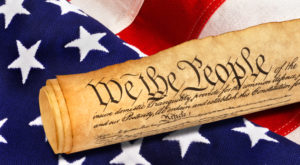 I absolutely believe that Americans are capable of putting aside their differences to help each other and to create a better life for themselves and others.
I absolutely believe that Americans are capable of putting aside their differences to help each other and to create a better life for themselves and others.
Why do I believe that? Because the actual truth is, Americans agree upon many more things than they disagree. How do I know that? Because there is so much good that happens every day across America. There are so many acts of kindness, so many good people helping others. Such acts indicate “harmony” and agreement amongst people, whereas disagreements manifest as “disharmony.” When is the last time you saw two people who totally disagreed treating each other with kindness?
The Birth of a Nation
With that in mind, the question became, “Where do I start?” I decided to start at the beginning, with the Declaration of Independence and the birth of the United States of America. I then studied the U.S. Constitution and the Bill of Rights. These three documents are collectively, and very appropriately, known as the “Charters of Freedom.” I also researched source documents such as the Federalist Papers, the Anti-Federal papers and letters that provide additional perspectives invaluable to a full understanding of the founding of our country.

Every American should read these documents so they know what their unalienable rights are and how those rights are to be secured. You’ll learn firsthand, what the Founders considered to be the ideal state of the union.

In the following pages, you will find links to the full transcript of each of the documents extracted from the National Archives in Washington, D.C. I also included a basic review of the key points of each document. There is, however, no substitute for taking the time to read each of these and learn more about them for yourself.
Education
Education is the first step in knowing what your  unalienable rights are, how the government is entrusted with securing those rights and how to protect those rights for yourself and others.
unalienable rights are, how the government is entrusted with securing those rights and how to protect those rights for yourself and others.
A vital part of that education is both knowing the meaning of the key words used by the founders, such as constitution or preamble, and understanding what was going on in the colonies as the founders were writing each.
To that end, a friend of mine gave me a book titled, “The People’s Guide to the United States Constitution.” The book bills itself as a “an easy-to-read, spin-free guide to the Constitution, the Bill of Rights, additional amendments, and the Declaration of Independence.”
States Constitution.” The book bills itself as a “an easy-to-read, spin-free guide to the Constitution, the Bill of Rights, additional amendments, and the Declaration of Independence.”
I am halfway through the book and it is definitely easy-to-read and spin-free. I would recommend it to anyone who wants to easily gain a fuller understanding of the founding documents and the framework that was established for protecting every American’s inalienable rights. The book is available here from Amazon.
Founding Documents
The Declaration of Independence, the Constitution and the Bill of Rights are the founding documents of the United States of America.
The signed originals of all three historic documents are housed in the Rotunda for the Charters of Freedom, at the National Archives Museum in Washington, D.C. Also on display are original documents that provide historical context for the writing of the Declaration of Independence, the Constitution and its first ten amendments, known as the the Bill of Rights.

Let’s take a closer look at each of these incredible documents by clicking the button below:
